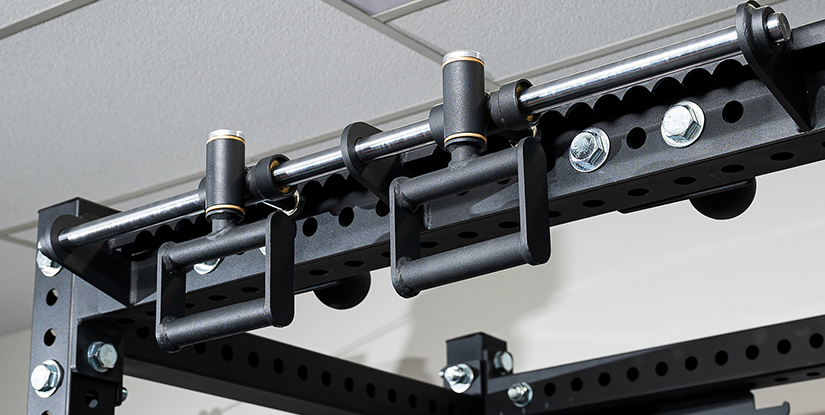Fitness Accessories: Essential Gear for Effective and Safe Workouts

Overview of Fitness Accessories
Fitness accessories complement core equipment and enhance workout effectiveness, comfort, and safety. Whether training at home, in a commercial gym, or outdoors, the right accessories help you target specific muscle groups, maintain form, and increase longevity in your routine. This guide outlines essential accessory categories, selection criteria, maintenance practices, and practical tips to maximize return on investment.
Key Benefits
- Improved technique: accessories such as resistance bands and lifting straps enable better alignment and form.
- Injury prevention: support items like knee sleeves and wrist wraps reduce strain and protect joints.
- Versatility and progression: small items expand exercise variety and scale intensity efficiently.
- Portability: many accessories are compact, supporting travel and outdoor training.
Essential Categories
Focus on accessories that deliver consistent value across multiple modalities.
- Resistance Bands: for mobility, warm-ups, progressive resistance, and assistance during pull-ups.
- Training Gloves and Grips: protect skin and improve hand traction during heavy lifts.
- Lifting Straps and Belts: increase grip security and core stability for heavy compound movements.
- Foam Rollers and Massage Tools: accelerate recovery and reduce muscle tension.
- Exercise Mats and Pads: provide cushioning and non-slip surfaces for floor work.
- Jump Ropes and Ankle Weights: enhance conditioning and lower-body endurance.
- Smart Accessories: heart rate monitors and fitness trackers for data-driven training.
How to Choose the Right Accessories
Selection should align with your goals, training frequency, and budget. Prioritize accessories that deliver multiple benefits and suit your primary training style:
- For strength athletes: durable lifting belts, chalk or grips, and heavy-duty straps.
- For functional fitness: resistance bands, mobility tools, and a quality jump rope.
- For runners and cyclists: heart rate monitors, compression sleeves, and recovery tools.
Material and build quality matter. Opt for trusted fabrics and robust hardware; cheap accessories often fail under repeated stress and can present safety risks.
Maintenance and Longevity
Regular maintenance extends lifespan and preserves hygiene. Key practices include:
- Inspect straps, seams, and rubber components for wear before each use.
- Clean textile accessories according to manufacturer instructions to prevent odor and degradation.
- Store bands and ropes away from heat and direct sunlight to avoid brittleness.
- Replace accessories that show significant fraying, cracking, or loss of elasticity.
Cost-Effective Buying Strategy
Invest in a small set of high-impact items before expanding. A basic starter kit can include resistance bands, a quality jump rope, a foam roller, and a durable exercise mat. Evaluate warranty, reviews focusing on longevity, and whether items are covered by return policies or guarantees.
Practical Training Tips
- Integrate accessories into progressive plans: e.g., use bands to scale movements until strength permits unassisted execution.
- Combine mobility tools with warm-ups to reduce injury risk prior to high-load sessions.
- Use data from smart accessories to adjust load, volume, and recovery recommendations objectively.
Storage and Travel Considerations
Compact accessories are ideal for travel. Use a dedicated bag to keep items organized and protected. When storing at home, keep accessories in a cool, dry place and avoid stacking heavy objects on top of softer items like foam rollers or mats.
Safety and Compliance
Always follow manufacturer instructions and replace worn items promptly. For accessories that bear load—such as straps or belts—confirm rated capacities and inspect hardware. Consult a qualified coach or physical therapist if you have existing injuries before introducing new support devices.
Conclusion
Well-chosen fitness accessories are cost-effective multipliers of performance and safety. Prioritize quality, match items to training goals, and maintain a regular inspection and cleaning routine. With thoughtful selection and care, accessories enhance workout variety, support progression, and contribute to long-term training adherence.
FAQs
- Q1: Which accessory is best for beginners?
A: Resistance bands and a basic exercise mat provide versatility and low cost. - Q2: How often should I replace resistance bands?
A: Replace when you see cracking or loss of elasticity; typically every 6–24 months depending on use. - Q3: Are lifting belts necessary?
A: Not for all lifters; useful for heavy compound lifts to enhance intra-abdominal pressure and stability. - Q4: Can accessories prevent injuries?
A: They reduce risk when used correctly alongside proper technique and progressive loading. - Q5: How to clean gym gloves?
A: Follow label care; usually hand-wash and air-dry to maintain shape and material integrity. - Q6: Are smart fitness accessories worth it?
A: Yes for data-informed training, especially for endurance and recovery tracking. - Q7: What should I carry for travel workouts?
A: Lightweight bands, a jump rope, and a small massage ball fit most travel needs. - Q8: Can ankle weights be used for running?
A: Generally not recommended for running; use for controlled strength or rehab exercises instead. - Q9: How to store foam rollers?
A: Keep them horizontally in a cool, dry place away from direct sunlight to prevent warping.

